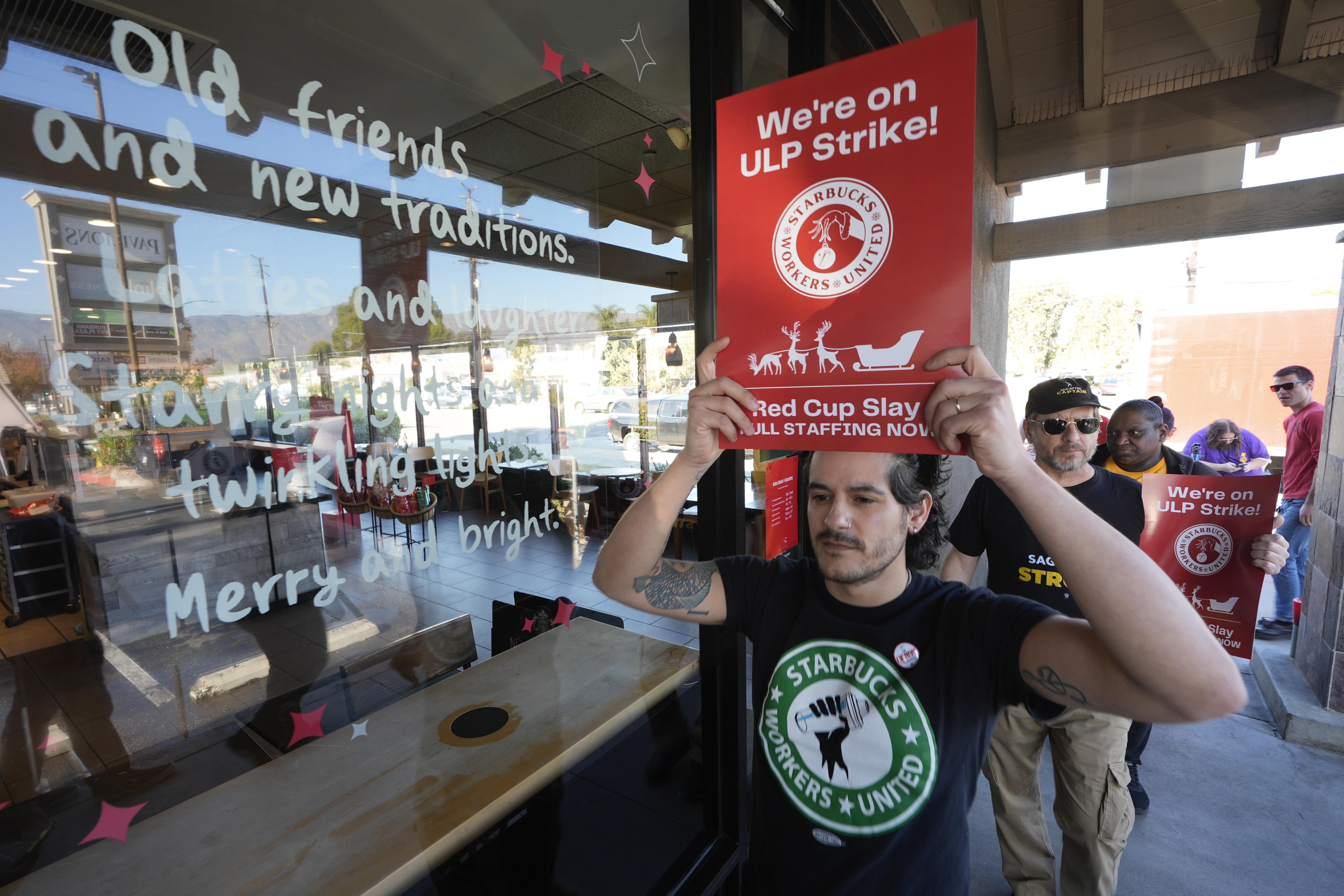Starbucks is facing the largest strike in its history as over 5,000 workers across more than 300 U.S. stores walked off the job this week. The five-day work stoppage, organized by Starbucks Workers United, began on Friday and is set to conclude on Christmas Eve. Workers from 45 states are participating, marking a significant escalation in the ongoing tensions between the coffee giant and its unionized employees.
Here's ads banner inside a post
Strike Details and Union Demands
The Christmas Eve strike aims to spotlight grievances related to wages, staffing levels, and scheduling practices. The union, representing employees at 525 Starbucks locations nationwide, called for coordinated strikes in 12 major cities, including New York, Los Angeles, Boston, and Seattle.
“These strikes are an initial show of strength, and we’re just getting started,” said an Oregon barista in a union statement. Starbucks Workers United has accused the company of failing to present a “serious economic proposal” during negotiations. Earlier this month, the union rejected Starbucks’ offer of no immediate wage increases and a 1.5% pay hike guarantee in future years.
Union representatives have expressed frustration over the company’s reluctance to meet their demands, describing the offer as inadequate given rising living costs and the increasing workload employees face.
Here's ads banner inside a post
Impact on Starbucks Operations
Starbucks, which operates more than 10,000 company-owned stores across the United States, reported that 98% of its locations remained open despite the strike. However, the union disputed this claim, asserting that over 290 stores were “fully shut down” as part of the strike effort.
The company has downplayed the operational impact, with spokespersons stating that the disruption was “very limited.” Morningstar analyst Sean Dunlop echoed this sentiment, noting that Starbucks likely won’t face immediate topline revenue losses.
However, the strike’s symbolic significance could have longer-term implications for the company’s reputation and labor relations.
Here's ads banner inside a post
Union vs. Starbucks: The Negotiation Stalemate
The strike follows months of failed negotiations between Starbucks and its unionized workers. Talks reportedly broke down after union representatives walked away from the bargaining table, which Starbucks claims was premature.
“We are ready to continue negotiations when the union comes back to the bargaining table,” Starbucks said in a statement.
Union leaders, however, argue that Starbucks has not engaged in good-faith bargaining. They demand a comprehensive proposal that addresses wage increases, better staffing, and more predictable schedules—issues they say are critical to ensuring fair treatment for employees.
Growing Union Momentum
This strike reflects the growing momentum of the Starbucks Workers United movement, which has successfully unionized hundreds of stores since 2021. The Christmas Eve strike, according to the union, is a demonstration of collective strength, emphasizing their determination to secure better working conditions.
“Starbucks has ignored the needs of its workers for too long,” said a union representative. “We’re here to show them that we won’t back down.”
The strike also highlights broader labor trends in the United States, where workers across industries are increasingly demanding higher wages and improved working conditions in response to inflation and evolving workplace dynamics.
Customer Reactions and Public Support
The strike has drawn mixed reactions from customers. Some have voiced support for the workers, praising their efforts to fight for fair wages and conditions. Others have expressed frustration over store closures during the busy holiday season.
On social media, the hashtag #StarbucksStrike has been trending, with many users encouraging others to support the striking workers by boycotting Starbucks for the duration of the strike.
Looking Ahead
As the strike concludes on Christmas Eve, the spotlight remains on Starbucks’ next move. With the union showing no signs of backing down, the company faces mounting pressure to address worker demands.
For Starbucks, this strike is more than an operational challenge—it’s a test of its ability to adapt to a labor landscape where unionized voices are growing louder. Whether the two sides can reach an agreement in the coming months will shape not only the company’s labor policies but also its public image as a socially responsible brand.
For now, Starbucks Workers United has sent a clear message: workers are ready to mobilize and take action until their voices are heard.

